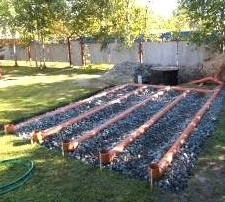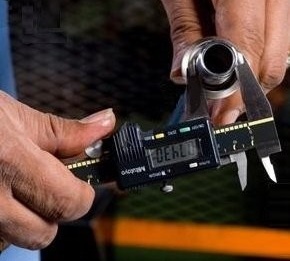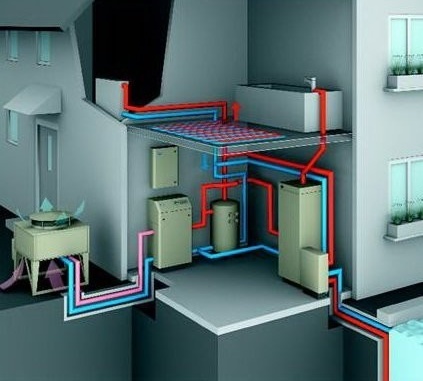Chimney for a boiler room: dimensioning and lightning protection wiring
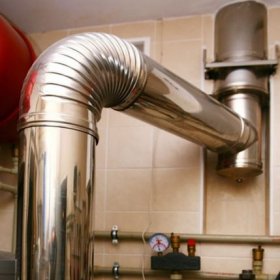
The efficiency of the heating boiler depends on the draft, for the creation of which a chimney is built for the boiler room. The force of natural traction that affects the combustion process depends on the temperature of the air, the temperature of the combustion products and the level of barometric pressure, as well as on the parameters of the chimney. Therefore, the dimensions of the chimney are calculated with particular accuracy. Insufficient chimney height can cause poor draft. Correct the defect by installing smoke exhausters that provide artificial traction. The removal of the products of fuel combustion into the atmosphere should not worsen the environmental situation in the village. The removal of gases and their dispersion in the atmosphere should occur at a sufficient height that exceeds all existing buildings in the nearby area.
Bandwidth Determination
Chimneys are built of brick, reinforced concrete, fiberglass. Modular chimneys made of stainless steel and assembled as a designer from separate parts selected according to the diameter and height of the structure under construction are gaining popularity.
In any case, installation begins after the preparation of the project and its approval by the relevant authorities. In the design documentation, the aerodynamic calculation of the chimney of the boiler room, which is currently performed using automated programs, should be presented.

The height of the chimney for the boiler room depends on the amount of fuel burned in the boilers per unit time
When performing the calculations, the minimum value of the throughput capacity of the smoke exhaust structure is determined, which can ensure the normal operation of the boiler room when operating the equipment at the maximum possible load. If at this stage an error is made in the calculations, then gases will accumulate in the gas-air path or boiler. Calculation of aerodynamic indicators gives a visual representation of the possible level of productivity of the blast and traction systems of the chimney. Engineering calculations of the height and diameter of the future structure should be performed by technicians with the appropriate specialized education.
What is taken into account when determining the height?
When designing a chimney, it is important to give an environmental justification for its size, calculated taking into account the calculation of dispersion in the atmosphere of emissions of harmful substances resulting from fuel combustion. Calculation of the height of the chimney of the boiler room must comply with sanitary standards for commercial and factory enterprises. In this case, the background concentration of hazardous substances in the atmosphere, obtained as a result of the action of other functioning sources of pollution, is always taken into account. The following factors affect this value:
- meteorological atmosphere at the location of the boiler room;
- air mass flow rate;
- terrain features;
- temperature of exhaust gases, etc.
Important! Based on the allowed amount of pollutant emissions, the optimal height of the boiler chimney is calculated. Since the ecological situation in most densely populated areas is unfavorable, in most cases the structure is erected above the calculated indicators corresponding to the lowest possible level. In sparsely populated areas, they are guided by the height of the chimneys of existing boiler houses.
Strength and structural stability calculations
The draft is affected not only by the height, but also by the diameter of the boiler chimney, the value of which depends on the amount of fuel burned per unit time.
Depending on the dimensions of the smoke exhaust structure, the foundation is calculated, namely, it is determined:
- its design;
- necessary depth of laying;
- sufficient sole area, etc.
Important! When calculating the diameter of the chimney, it is customary to use the following indicators of the gas velocity at the outlet: 15-20 m / s with natural traction (self-traction); 20-30 m / s with artificial draft in pipes up to 100 m high; 35-40 m / s with artificial draft in pipes with a height of 100 to 180 m.
The diameter range of chimneys constructed of brick and reinforced concrete varies from 1.2 m to 9.6 m. It should be noted that the minimum diameter of reinforced concrete pipes is 3.6 m.
How to provide effective lightning protection?
The amount of work required to carry out lightning protection of a boiler room is determined by regulatory document RD 34.21.122-87. The choice of the best option for lightning protection of a structure depends on the design of the chimney, as well as on the material of its manufacture.
On non-metallic chimneys, meter-long rod lightning rods are installed, the number of which depends on the height of the structure. One air terminal is enough for a pipe with a height of 15-50 m, two for a building with a height of 50-150 m, three for an object exceeding the mark of 150 m. In the latter case, the lightning protection of the boiler chimney can be made in the form of a steel ring, laid along its upper end.
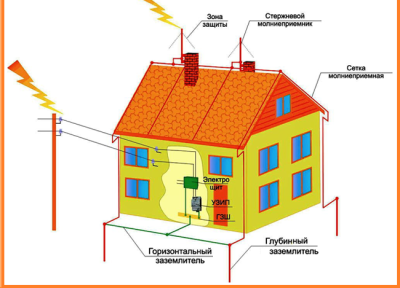
You can use an active lightning rod, but if you have a metal chimney, then it is enough to properly ground it and this is enough
In structures made of reinforced concrete, reinforcing rods act as down conductors, which are connected at the very top of the structure by welding or twisting. Metal pipes themselves are lightning arresters, therefore they do not need to install additional lightning protection elements.
In all cases, the supporting structure of the smoke exhaust structure is connected to the lightning protection ground electrode using a down conductor made of round steel with a diameter of 12 mm.
As you can see, the calculation of the dimensions of the chimney, as well as the design of the elements of its lightning protection, is a difficult task, the solution of which is best entrusted to specialized companies. Installation of the structure is carried out in accordance with the project and is commissioned by the commission, which necessarily includes a representative of the company developing the construction project.
